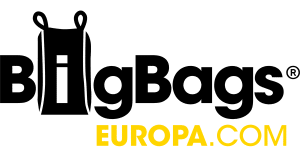ISPM15 - Frequently Asked Questions
We got all the answers!
What does ISPM15 stand for?
International Standards For Phytosanitary Measures No. 15 (ISPM 15)
Do I need to apply the ISPM 15 mark to wood packaging material which is made wholly of processed wood material?
No, plywood, particle board, oriented strand board or veneer that has been created using glue, heat or pressure, or a combination thereof is of sufficiently low risk and to be exempted from the provisions of the ISPM standard.
Reuse of wood packaging material. If used again, does the wood packaging material need to be treated again in accordance with the ISPM standard?
No. A unit of wood packaging material that has been treated and marked in accordance with the ISPM15 standard and that has not been repaired, remanufactured or otherwise altered does not require re-treatment or reapplication of the mark throughout the service life of the unit
What does the ISPM15 standard describe?
The standard describes phytosanitary measures that reduce the risk of introduction and spread of quarantine pests associated with the movement in international trade of wood packaging material made from raw wood. Wood packaging material covered by this standard includes dunnage but excludes wood packaging made from wood processed in such a way that it is free from pests (e.g. plywood). The phytosanitary measures described in this standard are not intended to provide ongoing protection from contaminating pests or other organisms.
What is a Heat Treatment?
Since 2015 is heat treatment, HT the only treatment which can may be used for common applications. The wood needs to be heated until its core reaches 56 °C for at least 30 minutes.
Are there exemptions in the ISPM15 standard?
The following articles are of sufficiently low risk to be exempted from the provisions of the ISPM15 standard:
- wood packaging material made entirely from thin wood (6 mm or less in thickness)
- wood packaging made wholly of processed wood material, such as plywood, particle board, oriented strand board or veneer that has been created using glue, heat or pressure, or a combination thereof.
- barrels for wine and spirit that have been heated during manufacture
- gift boxes for wine, cigars and other commodities made from wood that has been processed and/or manufactured in a way that renders it free of pests
- sawdust, wood shavings and wood wool
- wood components permanently attached to freight vehicles
Why ISPM15?
Who controls ISPM15?
As part of the United Nations Food & Agriculture Organisation (FAO), the International Plant Protection Convention (IPPC) controls the regulations through the cooperation of member governments of the UN.
What is classed as WPM?
ISPM15 applies to coniferous softwood and non-coniferous hardwood used as raw wood packaging material. The standard does not apply to wood packaging made wholly of manufactured wood-based products such as plywood and veneer, reconstituted wood products (particle board, chipboard, Presswood, oriented strand board, high density fibre board, and medium density fibre board) or products created using glue, heat and pressure or a combination thereof.
How can you tell if WPM has been treated?
All treated WPM will have the IPPC mark, as shown below:

What do the markings indicate?
The markings must be within a rectangular border with a vertical line separating the IPPC logo (on the left) from the identifying data. The border lines may be solid or broken; and the corners may be rounded.
XX – indicates a two letter ISO country code (a link to these may be found on our Links page).
0000 – the next series of letters/numbers is the unique identification mark of the wood treatment agent or packaging manufacturer.
The number of letters or digits may vary according to each country. The country code and treatment agent or manufacturer code must be separated by a hyphen.
YY – This indicates the type of treatment, and will either be HT (Heat Treatment) or MB (Methyl Bromide).
The marking ‘DB’ (indicating debarking has taken place) is no longer used. However, as pallets may last several years, the older style of ISPM15 marking is still permissible.
How do I find a supplier of treated WPM in my country?
If you do not know the organization responsible for regulating ISPM15 in your country then contact your National Plant Protection Organization representative.

In need of good quality big bags?
You can order even small amounts of big bags at Bigbags Europa.com